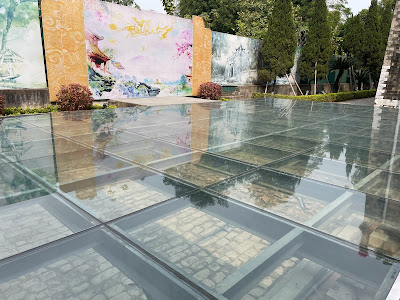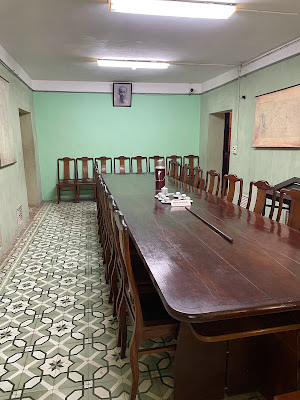Hanoi - After our 'Obama Bun Cha' and with some time on our hands, we went to visit the Hanoi Imperial Citadel.
As I walked through the gates of the Hanoi Imperial Citadel, I was transported back in time to the 11th century, when the citadel was first constructed. The citadel, also known as the Thang Long Imperial Citadel, served as the political center of Vietnam for over 1,000 years. It was the seat of power for the Ly, Tran, Le, and Nguyen dynasties, and is considered one of the most important historical sites in Vietnam.
A citadel is a type of fortress that is typically used to protect a city or important site from attack. The Hanoi Imperial Citadel was built in 1010 by Emperor Ly Thai To, and was the political and cultural center of Vietnam for centuries. The citadel was strategically located near the Red River and was surrounded by a moat and massive walls that were up to 12 meters high and 3 meters thick.
In 2010, the Hanoi Imperial Citadel was designated a UNESCO World Heritage Site. This recognition was based on the citadel's cultural significance, as it was the center of political power in Vietnam for over 1,000 years.
 |
| Excavation site |
The archaeological site is where archaeologists have uncovered the remains of ancient structures and artifacts. This site is especially important because it provides a glimpse into the early history of the citadel, and how it evolved over time.
The most impressive was this bowl with the dragon motif illuminated.
The Hanoi Imperial Citadel is not only an impressive architectural site, but it also has a fascinating history that includes the use of underground bunkers.
During the Vietnam War, the North Vietnamese Army used the citadel as a military base, and built an extensive network of underground tunnels and bunkers to protect themselves from American bombing raids.
 |
| deep underground bunkers |
These underground bunkers were a vital component of the North Vietnamese Army's defense strategy, and allowed them to move freely around the citadel without being detected by enemy planes. The bunkers were also used for storage and as a command center for military operations.
 |
| A photo shot with Uncle Ho |
 |
| Vietnam war meeting place |
 |
| Air filtration system |
 |
| communist era car |












No comments:
Post a Comment